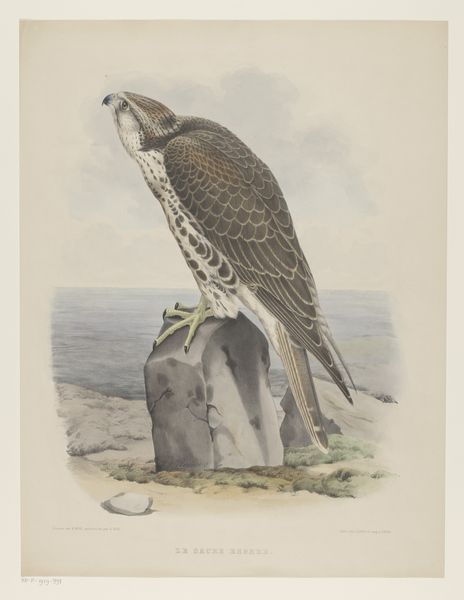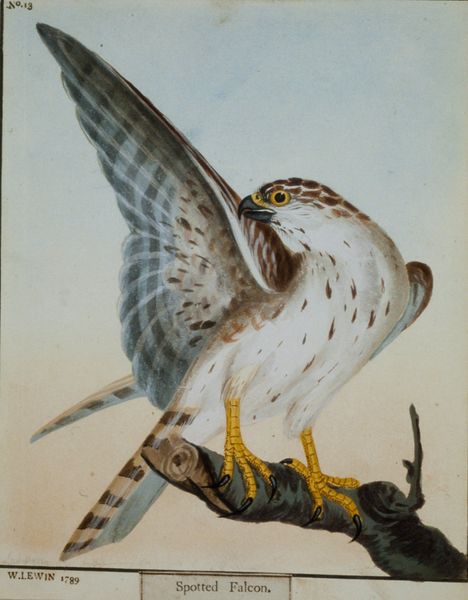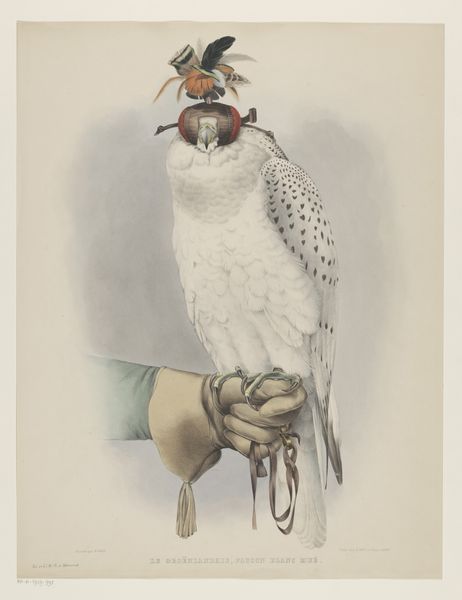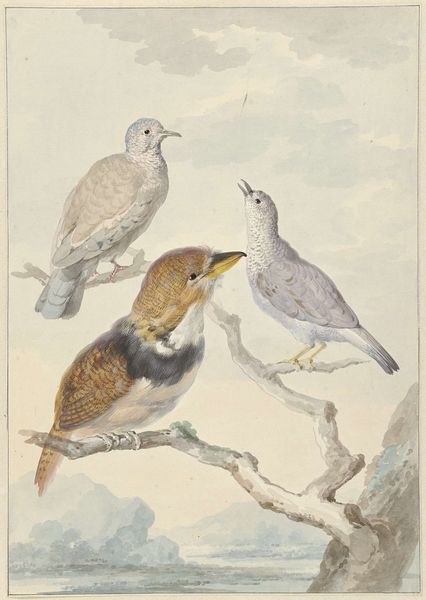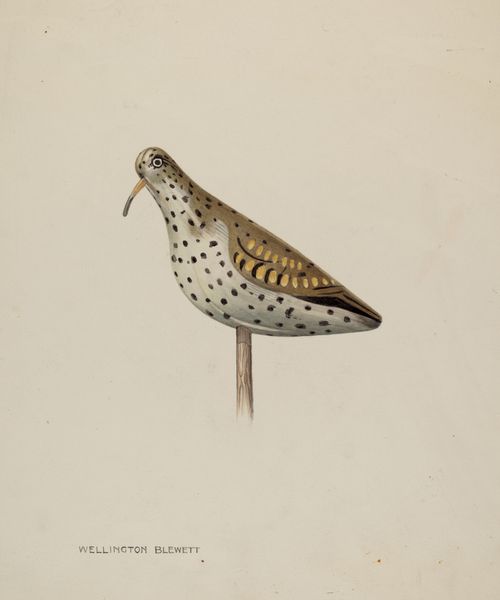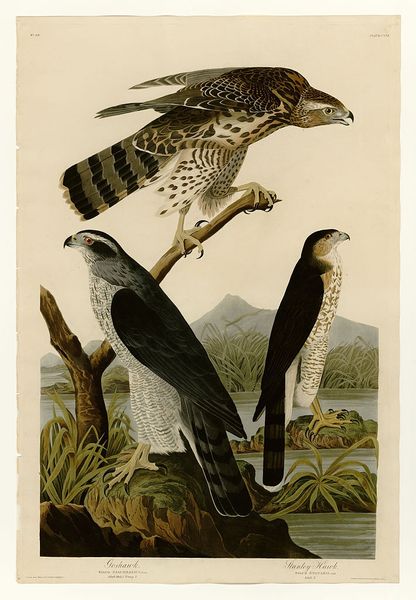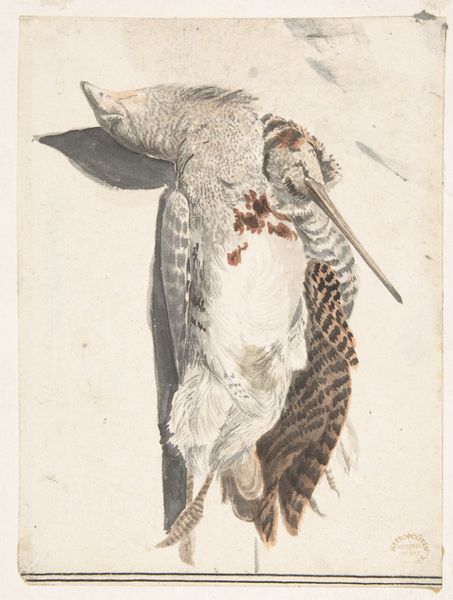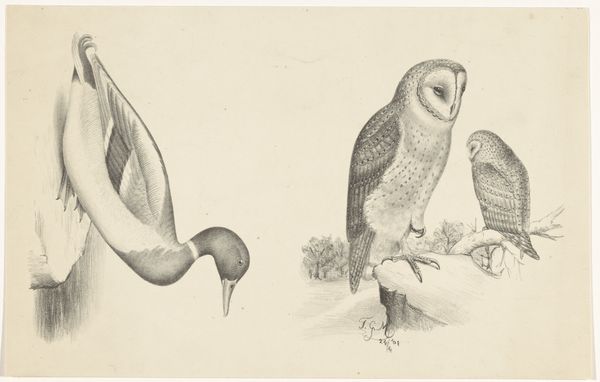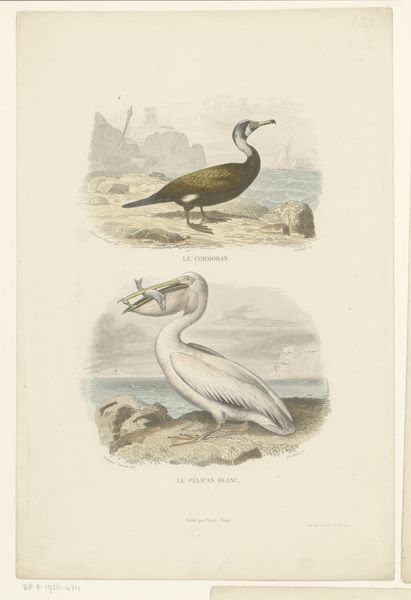
print, watercolor
# print
#
impressionism
#
landscape
#
oil painting
#
watercolor
#
animal portrait
#
watercolour illustration
#
watercolor
Copyright: Public Domain
John Gould made this print of Greenland Falcons in the 19th century, using lithography, a technique of printing from a flat stone or metal plate. Gould was a self-taught English ornithologist and bird artist, known for his detailed illustrations. The charm of the image lies in the texture and form achieved through lithography. The subtle gradations of tone, from the crisp white plumage to the rocky landscape, would have been built up with careful applications of grease-based ink on the lithographic stone. The print’s appeal resides in Gould’s artistic skill, but also in the labor and artistry involved in lithographic printing, where the image is drawn with a greasy crayon onto a flat stone. This allowed for a much more spontaneous effect than earlier printmaking processes like etching or engraving. Gould's detailed renderings of birds were highly valued in an era of scientific exploration and discovery. They satisfied a growing demand for images of the natural world. Understanding how this image was made, and the wider social context for its production, brings us closer to understanding its appeal.
Comments
No comments
Be the first to comment and join the conversation on the ultimate creative platform.

